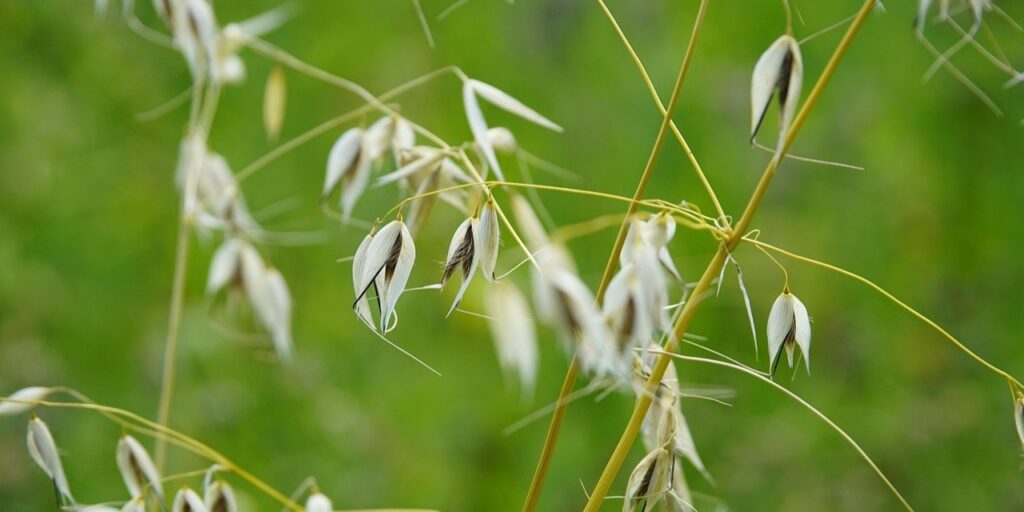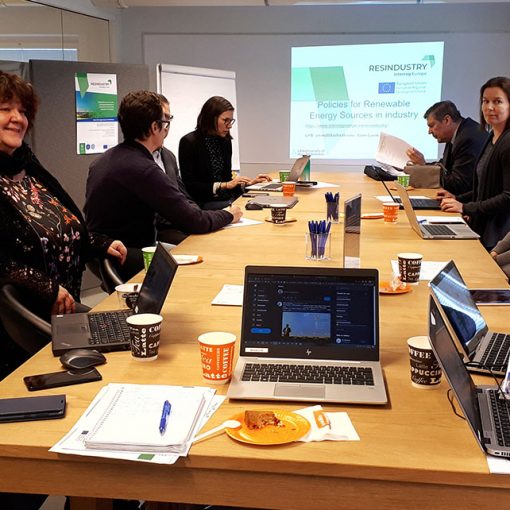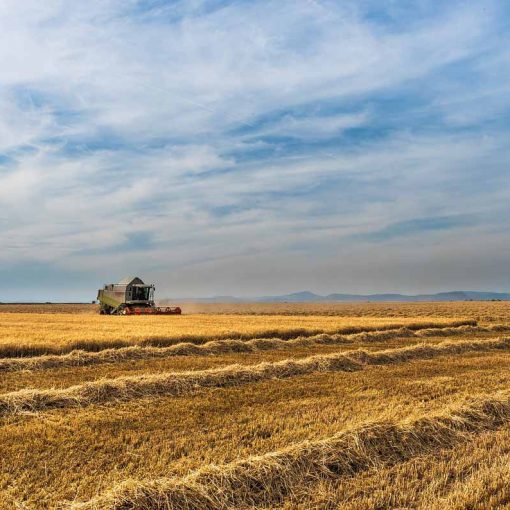The export of oat products from Finland holds considerable growth potential, but expanding into international markets also comes with its fair share of challenges. One of the goals in the Food Campus Finland network project is to determine the opportunities for increasing exports in the food industry of Päijät-Häme.
As a part of the project, Anna Syrjä, a student at LAB University of Applied Sciences, researched the subject during the Innohub cours, which is a practical and hands-on course designed to help students apply the knowledge and skills gained through previous studies and real-world experience. The course is open to students from all Master’s programmes and disciplines. The goal of this project was to understand the readiness and needs of oat-producing companies in Päijät-Häme for developing their export activities.
This project provided a unique perspective into the dynamics of oat exports. Anna Syrjä had the opportunity to explore a new field: “As someone outside the food and beverage (f&b) industry, this project was eye-opening. It allowed me to explore the f&b export dynamics, understand Finland’s national export targets and support mechanisms, and engage in discussions with industry professionals.”
Anna highlights the project’s outcomes as following:
Unpacking the strengths and challenges of Finnish oat exports
The research revealed several clear strengths that Finnish oats bring to the international market:
- Premium quality – Finnish oat is known for its quality. The attribute aligns perfectly with the growing global consumer demand for healthy and sustainable products (Jansik et al. 2024).
- Rising global demand for plant-based foods – As the world shifts toward plant-based diets, demand for healthy, plant-based proteins is soaring. Finnish oats, renowned for their versatility and health benefits (Jansik et al. 2024), are well-positioned to meet this growing demand.
- Export support structures – Finland’s strategic support structures help companies streamline their international expansion efforts, offering critical guidance and reducing the complexity of entering new markets (Schroderus 2024; LADEC 2024; LAB University of Applied Sciences 2023).
However, several obstacles also hinder the growth of exports:
- High production costs – Finland’s high production costs create challenges, especially when competing in price-sensitive markets (Korhonen 2024).
- Limited resources for small and medium-sized enterprises (SMEs) – Smaller companies often face difficulties in mobilizing the resources needed to enter international markets, preventing them from scaling their export operations (Jansik et al. 2024).
- Complex export regulations – The intricate web of international trade rules can be a major hurdle for companies without the proper expertise or support (Timonen 2025).

New approaches to overcome barriers and accelerate growth
One key takeaway from the research was the need for a fresh, more practical approach to exporting. While export support programs exist, they may feel disconnected from the real-world challenges companies face. There’s a significant opportunity here to rethink how export strategies are communicated and implemented, especially for SMEs.
For example, could we help oat producers internalize the idea of conquering global markets? A shift in mindset, alongside internal enthusiasm, could help overcome barriers.
Creating practical, easy-to-follow export guides that are specifically tailored to the needs of Finnish oat producers could bridge the gap between theory and practice. These guides could simplify the complex export process, making it more accessible for SMEs to take their first step toward international growth. Could sharing export stories and insights serve as an effective, reliable, and compelling spark for a new journey, ultimately leading to a fresh export story?
Conclusion: A fresh perspective on exports
This research underlines the possibilities for the future of exports. Finland’s reputation for producing high-quality sustainable products creates a potential to position Finnish oats as a globally recognized brand. Also, there is an abundance of actors and projects supporting the exporters like the Food Campus Finland network.
Link to the website of the Food Campus Finland network
In short, the future of Finnish oat exports could be brighter than ever. Now is the time to explore new strategies and approaches that could unlock a whole new era of growth for Finnish oats. This may very well be the beginning of something exciting for our beloved Finnish oat.
Authors
Anna Syrjä is a MBA Student at LAB University of Applied Sciences, studying in the Master’s Degree Programme in Business Innovation, Culture, and Creativity.
Katja Pethman works as an RDI Specialist at LAB University of Applied Sciences. She is a project manager in the Food Campus Finland network project.

The Food Campus Finland network project aims to create a nationwide and international collaborative platform based on the Food Campus Finland framework. This project will establish expertise and infrastructure, support the development of plant-based food solutions, and strengthen Päijät-Häme’s position as an internationally competitive hub in the food industry. It will create the groundwork for a national and international Food Campus Finland collaboration network, enhance the region’s research and innovation infrastructure, and boost international business in the Päijät-Häme food cluster, as well as attract new investments. LAB University of Applied Sciences and Lahden Seudun Kehitys LADEC Ltd will lead the project in cooperation with key regional stakeholders and partners.
References
Jansik, C., Kaukovirta, A., Knuuttila, M., Kohl, J., Koivisto, A., Lehtonen, H., Niemi, J., Pesonen, L., Rikkonen, P., Saarni, K., Setälä, J. & Wejberg, H. 2024. Ruoka-ala kasvuun viennin ja ruokainnovaatioiden vetämänä: Keskustelunavaus ruokasektorin arvonlisän kasvattamiseen. Luonnonvara- ja biotalouden tutkimus 7/2024. Helsinki: Luonnonvarakeskus. Cited on 15 Dec 2024. Available at http://urn.fi/URN:ISBN:978-952-380-873-7
jhenning. 2020. Kaura, Kypsä, Viljaa. Pixabay. Cited 28 May 2025. Available at https://pixabay.com/fi/photos/kaura-kyps%C3%A4-viljaa-kes%C3%A4-maatalous-5428317/
Korhonen, A. 2024. Elintarviketeollisuus on huolissaan jalostettujen elintarvikkeiden tuonnin kasvusta. MTV Uutiset 30.12.2024. Cited on 30 Dec 2024. Available at https://www.mtvuutiset.fi/artikkeli/lounasruoissa-ja-kaupoissa-yha-enemman-tuotteita-ulkomailta-eihan-koululainen-tieda-mita-han-oikeasti-syo/9070272
LAB University of Applied Sciences. 2023. Food Campus Finland to boost Finnish food expertise and exports. Cited on 17 Dec 2024. Available at https://lab.fi/fi/uutiset/food-campus-finland-kasvattamaan-suomen-ruokaosaamista-ja-vientia
LAB University of Applied Sciences. 2024. Food Campus Finland – Verkostojen vahvistaminen. Cited on 10 Apr 2025. Available at https://lab.fi/fi/projekti/food-campus-finland-verkostojen-vahvistaminen
LADEC. 2024. Food Campus Finland – Verkostojen vahvistaminen. Cited on 17 Dec 2024. Available at https://www.ladec.fi/ladec/hankkeet/hanke/food-campus-finland-verkostojen-vahvistaminen
Schroderus, T. 2024. Lahti region has the potential to grow into the Silicon Valley of the food industry. Cited on 15 Dec 2024. Available at https://www.ladec.fi/yritystarinat-artikkelit/lahden-seudulla-edellytykset-kasvaa-elintarvikealan-piilaaksoksi
Timonen, P. 2025. Elintarvikeviennin kasvua tukeva rakenne ja valtion tehtävä vienninedistämisessä: Selvityshenkilöraportti 21.1.2025. Maa- ja metsätalousministeriö. Cited on 21 Apr 2025. Available at https://julkaisut.valtioneuvosto.fi/handle/10024/166090
Links
Link 1. LADEC. 2024. Food Campus Finland – Verkostojen vahvistaminen. Cited on 17 Dec 2024. Available at https://www.ladec.fi/ladec/hankkeet/hanke/food-campus-finland-verkostojen-vahvistaminen




